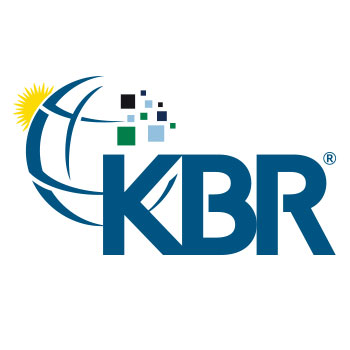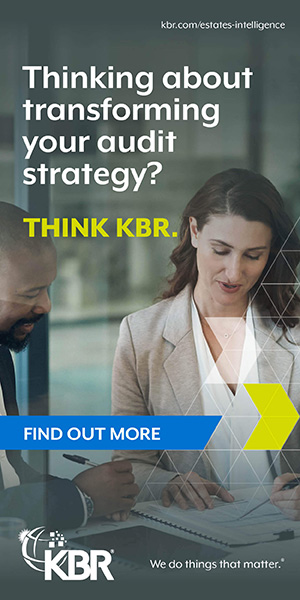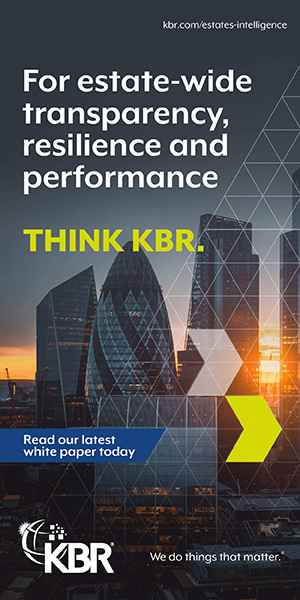
For over six decades, KBR has been at the forefront of executing critical government projects and programs, providing cutting-edge technology-driven solutions tailored to the unique needs of public sector clients in the UK.
In their latest whitepaper, KBR Estates Intelligence explores the ways automation and aggregation can be used to achieve success within public sector estates management.
In the rapidly evolving landscape of public real estate, the efficacy of estates management is pivotal. Maintaining asset value, ensuring sustainability and optimising operational efficiency are now more crucial than ever. As the sector advances, the integration of cutting-edge technologies, particularly automation and data aggregation, has emerged as a necessity. This article delves into how these technological capabilities are transforming estates management and highlights how KBR Estates Intelligence, utilising its VIAverse technology platform, is at the vanguard of this revolution. This is particularly pertinent for CEOs, Facilities Managers, Estates Managers, Sustainability Executives and Corporate Social Responsibility (CSR) Leads within the UK’s public sector estates and facilities management sphere.
The Automation Imperative in Estates Management
Automation, the deployment of technology to execute tasks with minimal human intervention, is reshaping the estates management landscape. Complex asset arrays demand scalable workflows and efficient, controlled task routing. Building a full audit trail and managing stakeholder notifications are essential components of this transformation. Key areas of impact include maintenance scheduling, energy management, security systems and tenant communications.
Automated systems can now anticipate maintenance needs, schedule repairs and procure necessary parts, thereby minimising downtime and extending the lifespan of assets. For example, automated energy management systems provide real-time monitoring and control, yielding substantial cost savings and sustainability gains. Smart HVAC systems, for instance, dynamically adjust based on occupancy patterns, leading to significant energy efficiency.
Automation also enhances security through intelligent surveillance, automated access controls and real-time threat detection, ensuring robust protection for tenants and properties. Automated access controls linked to task routing streamline exception management, further bolstering security measures. Additionally, automated platforms facilitate tenant and user communications, scheduling viewings, handling enquiries and managing lease renewals. This streamlining of tenant interactions boosts satisfaction and frees staff to focus on more complex tasks.
Aggregation: A Strategic Necessity
Data aggregation, the consolidation of information from diverse sources, provides a holistic view of estate performance and underpins superior decision-making. In a reality where estate management involves multiple organisations and systems, aggregation becomes essential for structuring, presenting, interrogating, understanding and acting upon information.
Aggregating data from maintenance logs, energy records and tenant/user feedback into a single platform allows for the identification of trends and proactive issue resolution. Such integration enables advanced analytics, helping managers monitor key performance indicators (KPIs) such as occupancy rates, energy efficiency and maintenance costs. This informed approach drives strategic decisions and reveals potential risks, such as frequent maintenance issues or security vulnerabilities. Comprehensive data aggregation also facilitates predictive modelling, enabling a shift from reactive to proactive management.
The Central Role of Business Intelligence (BI)
Business Intelligence (BI) is the cornerstone of any estates management strategy. Whether through a central Computer-Aided Facilities Management (CAFM) platform, an aggregated multi-CAFM landscape, or a standalone BI model, the ability to consume and interpret data is crucial.
Central CAFM platforms drive transactional work order data to suppliers and consolidate estate-related information. BI tools connected to these systems model data and present actionable insights, enhancing decision-making capabilities. Even in the absence of CAFM or data warehousing, robust BI frameworks ensure comprehensive data consumption and interpretation, facilitating informed decision-making across the board. Combine this with expert, independent and benchmarked insight, presented clearly and when needed, and you have a set up optimised for success.

KBR Estates Intelligence: VIAverse and Beyond
KBR Estates Intelligence provides the integration of automation, aggregation and BI through its VIAverse technology platform. This advanced system optimises estate operations with state-of-the-art technology and expert insights.
The VIAverse platform unifies various estates management functions, automating routine tasks, aggregating data from multiple sources and delivering real-time analytics. This seamless integration enhances operational efficiency and decision-making processes. KBR’s team of seasoned professionals ensures the effective implementation and utilisation of the VIAverse platform, maximising its benefits for clients. With a deep understanding of the industry and their government experience, KBR continuously evolves the VIAverse platform to meet the dynamic needs of public sector estates managers.
Automation and aggregation are not merely tools, but strategic imperatives in modern estates management. These capabilities streamline operations, enhance decision-making and boost overall efficiency. KBR Estates Intelligence, with its VIAverse platform, methodology and expert team, is uniquely positioned to harness these solutions. For UK public sector estates and facilities management leadership, embracing these innovations is crucial for optimising operations, ensuring sustainability and maximising stakeholder value.
As the public sector grapples with budget constraints and the imperative for sustainability, whilst maintaining compliance and security, the strategic deployment of automation and data aggregation becomes even more critical. These technologies not only reduce operational costs, but also contribute to achieving broader sustainability goals. By automating routine processes and aggregating data for insightful analysis, public sector estates managers can ensure their operations are both efficient and environmentally responsible.
In conclusion, the integration of automation and aggregation into estates management strategies is transformative. KBR Estates Intelligence, through its VIAverse platform, provides the tools and expertise necessary to leverage these technologies effectively. For public sector leaders, the message is clear: adopting these innovations is essential for maintaining asset value, enhancing sustainability and optimising operational efficiency in today’s complex and dynamic real estate environment.
This article is based on the latest white paper from KBR Estates Intelligence. You can read more at kbr.com/estates-intelligence
More Information:
Contact the KBR Estates Intelligence team today:
email EI@kbr.com
call 01372 862865
or visit our website kbr.com/estates-intelligence.









